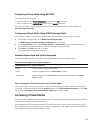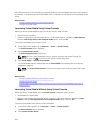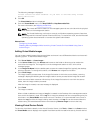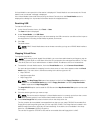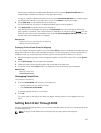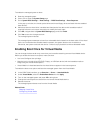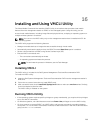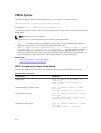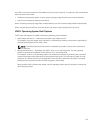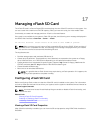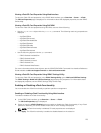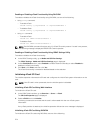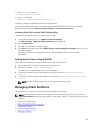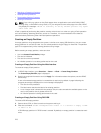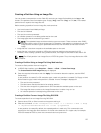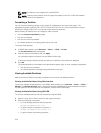
If the file is not write-protected, Virtual Media may write to the image file. To make sure that Virtual Media
does not write to the media:
• Configure the operating system to write-protect a floppy image file that must not be overwritten.
• Use the write-protection feature of the device.
When virtualizing read-only image files, multiple sessions can use the same image media simultaneously.
When virtualizing physical drives, only one session can access a given physical drive at a time.
VMCLI Operating System Shell Options
VMCLI uses shell options to enable the following operating system features:
• stderr/stdout redirection — Redirects any printed utility output to a file.
For example, using the greater-than character (>) followed by a filename overwrites the specified file
with the printed output of the VMCLI utility.
NOTE: The VMCLI utility does not read from standard input (stdin). Hence, stdin redirection is
not required.
• Background execution — By default, the VMCLI utility runs in the foreground. Use the operating
system's command shell features for the utility to run in the background.
For example, under a Linux operating system, the ampersand character (&) following the command
causes the program to be spawned as a new background process. This technique is useful in script
programs, as it allows the script to proceed after a new process is started for the VMCLI command
(otherwise, the script blocks until the VMCLI program is terminated).
When multiple VMCLI sessions are started, use the operating system-specific facilities for listing and
terminating processes.
271



